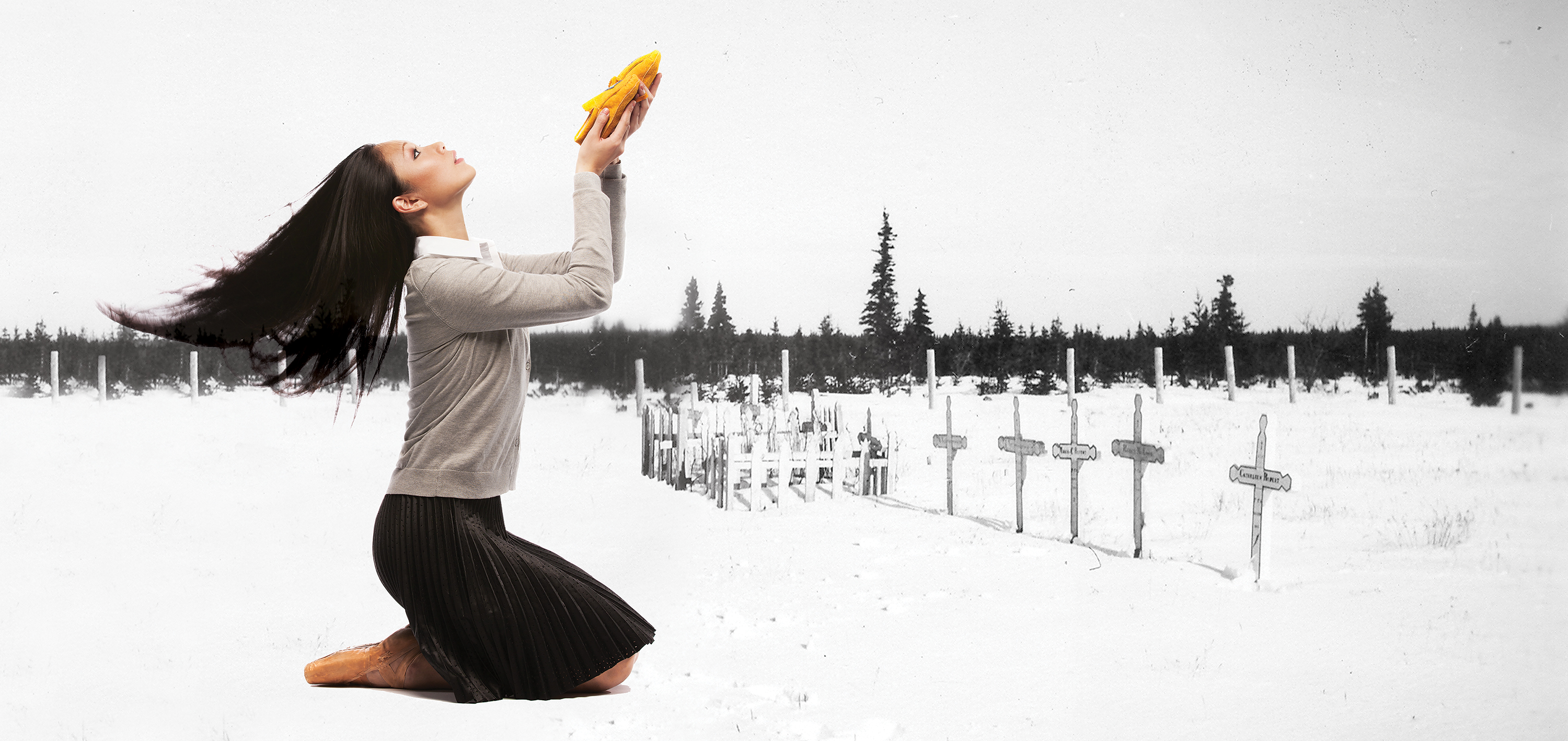It’s hard to imagine how the carefully choreographed pirouettes and pliés of a ballet might be used to explore the generational traumas experienced by Canada’s First Nations through the residential school system.
And yet that is exactly what the Royal Winnipeg Ballet will attempt to do Oct. 1-5 in Going Home Star – Truth and Reconciliation.
“Essentially it’s a love story woven around the Truth and Reconciliation Commission findings,” says RWB artistic director André Lewis.
The story, written by Joseph Boyden, follows Annie, a young, independent aboriginal woman played by Sophia Lee. Annie works as a hairdresser and lives an urban life of wild partying, taking on different lovers every night.
She encounters a homeless First Nations man, Gordon, portrayed by Liang Xing. Gordon is forced from his home on a reserve at a young age and into the residential school system, eventually fleeing to fend for himself on the street.
The two first meet in the subway, and through that meeting they connect and begin to help each other recover from the legacy of pain inflicted by the residential school system.
Support from aboriginal community
Lewis says the aboriginal community has been behind the premise of Going Home Star since it was in its conceptual phase almost ten years ago.
“I would’ve never approached this subject matter if it had not been for aboriginal people supporting this, but this is not an aboriginal problem, it’s a Canadian problem,” says Lewis.
The aboriginal community as a whole has been supportive of Going Home Star, says Lewis, because they feel their story is being told.
“In the ballet itself, you see the effect that the schools have had on the main character, Gordon, and how Annie ultimately helps him and rediscovers her culture, her background – that’s why it’s called Going Home Star, to reconnect with what [the Catholic Church] and a successive government tried to erase.”
Polaris Prize winner Tanya Tagaq part of GHR
Although there won’t be any First Nations dancers in the ballet, there will be other forms of contributions made from a series of First Nations artists.
“We have Tanya Tagaq, who is a throat singer,” says Lewis.
Tagaq won the 2014 Polaris Music Prize award for her album Animism.
Steve Wood and the Northern Cree Singers are also part of Going Home Star.
“It wasn’t going to be just white only Anglo-Saxon men that created the work,” said Lewis. “I wanted the continuum, which is why we have KC Adams [as set designer], who is an installation artist in Winnipeg.”
Aside from ballerina Maria Tallchief, formerly of the New York City Ballet and who passed away last year at the age of 88, historically there have been very few aboriginal people participating at elite levels of ballet in North America, says Lewis.
So, in an attempt to make the ballet more inclusive, the RWB announced Monday night they are inviting residential school survivors to take in Going Home Star for free. There is a limited amount of seating so survivors wishing to attend should contact the RWB’s Angela Hendryat 204-957-3494 or email [email protected] by Monday, September 29.
They also announced a “Pay What You Can” evening on Oct. 2. Reduced-rate tickets go on sale at 5:30 p.m. the day of the show. Suggested donation price is $20.


